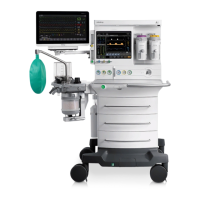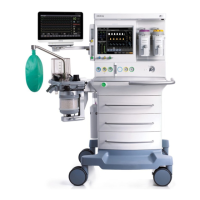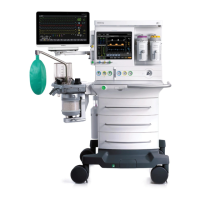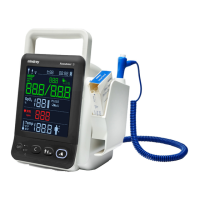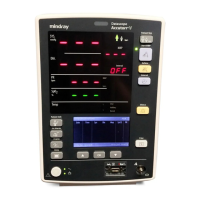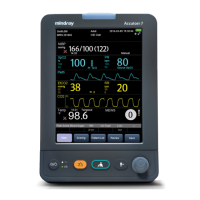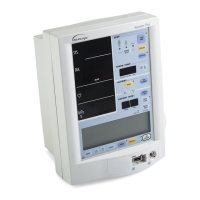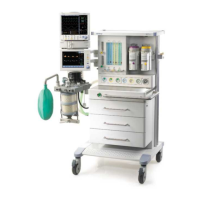Cleaning and Disinfection Maintenance
9 - 8 Operator’s Manual of Anesthesia System
9.6.1 Auxiliary Outlet Test
Verify that the mains power voltage appears on each auxiliary outlet when the anesthesia system is
connected to the mains power.
9.6.2 Electrical Safety Test
1. Perform protective earth resistance test:
a. Connect the two probes for testing the grounding impedance of the safety analyzer to the
protective grounding terminal and equipotentiality of the AC power supply respectively.
b. Test the grounding impedance using a 25A testing current.
c. Verify that the impedance value is not greater than 0.1 ohms (100mohms).
d. Connect the two probes for testing the grounding impedance of the safety analyzer to the
protective grounding terminal of the AC power supply and the protective grounding
terminal of any auxiliary outlet respectively, and repeat Steps b and c.
e. If the impedance value is greater than 0.1ohms (100mohms) but smaller than 0.2ohms
(200mohms), remove the AC power cable, and connect the probe that was originally
connected to the protective grounding terminal of the AC power supply to the protective
grounding terminal of the AC power outlet. Then repeat Steps a to d.
2. Test the earth leakage currents in the following circumstances:
• Normal polarity
• Reverse polarity
• Open neutral, normal polarity
• Open neutral, reverse polarity
3. Verify that the maximum leakage current in the first two circumstances does not exceed 500μA
(0.5mA), and that in the last circumstance does not exceed 1000μA (1mA).
NOTE: Please use a certified safety analyzer (such as UL, CSA or AAMI) and
perform related tests following their respective instructions.
WARNING: Leakage current tests are required when the normal saline or blood
spills and after the start of each monitoring. A leakage current test is
required immediately after a major surge appears in the residential
electrical system.
WARNING: Keep in mind that liquids similar to normal saline and Ringer's solution
and blood are excellent conductors. Avoid touching any part of the
system using a wet hand. Always operate using clean and dry hands.
9.7 Cleaning and Disinfection
ISO 17664 compliance:
The autoclaving process of the Anesthetic Breathing System has been
tested and found to be in compliance with ISO 17664:2017.
Compliance to ISO 17664:2017 only applies when bacterial/viral filters
are used to filters air coming in from the patient and returning air to the
patient. Filters must be properly installed.
Refer to 9.7.3 "Breathing System" and " 9.7.1 "Cleaning Agents and
Disinfectors/Autoclaving".
WARNING: Stop using the equipment and contact your service personnel if the
housing is damaged to avoid electric shock and injury.
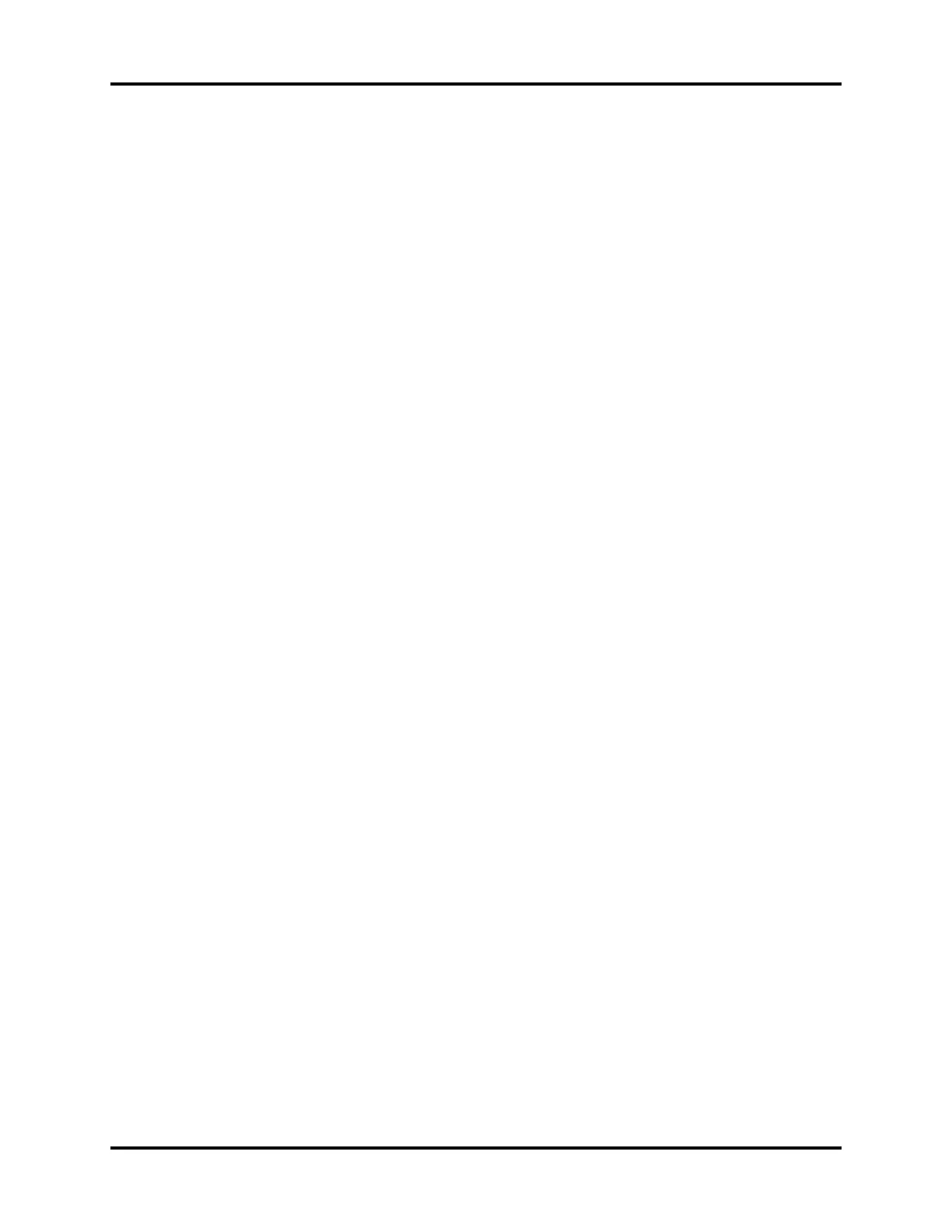